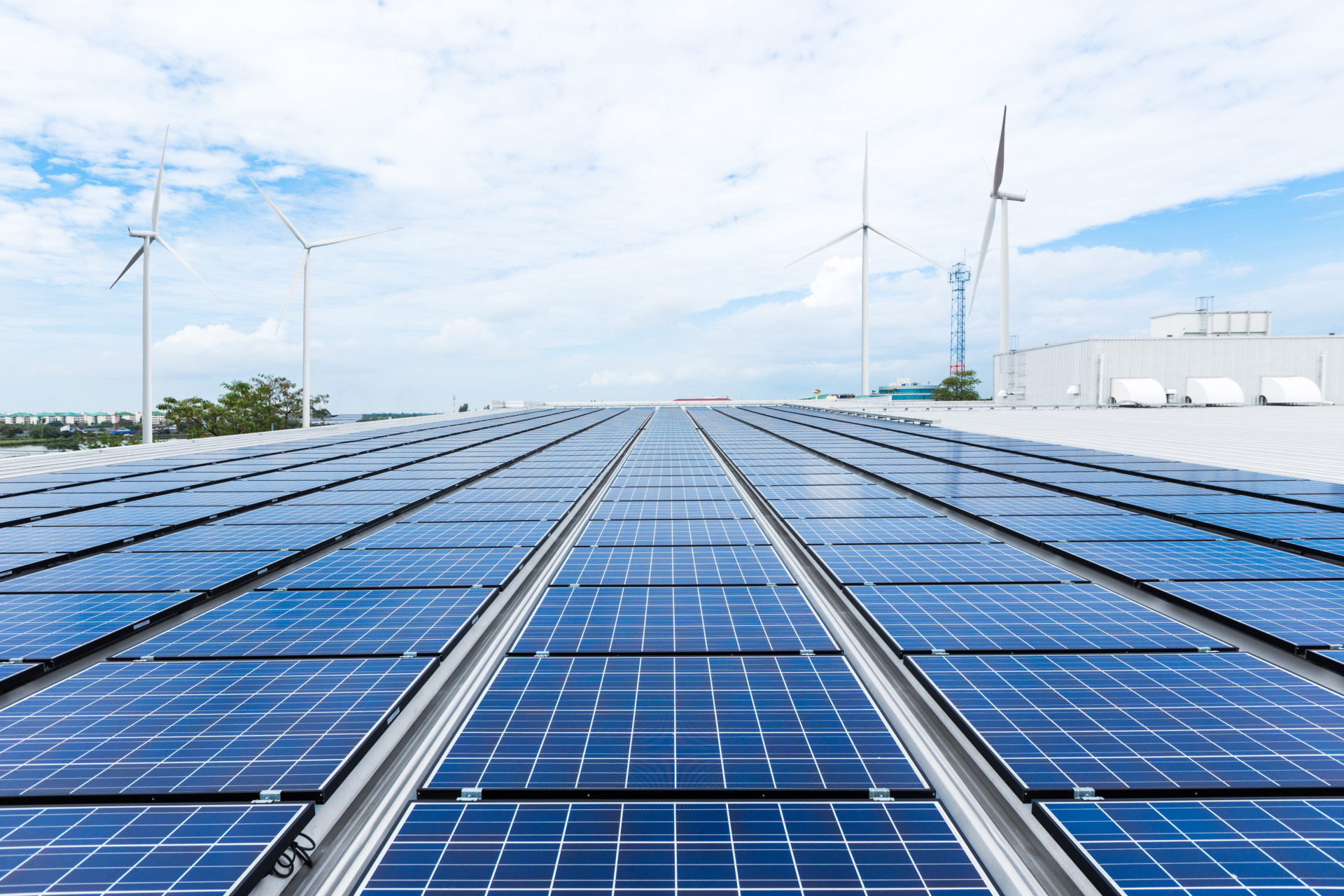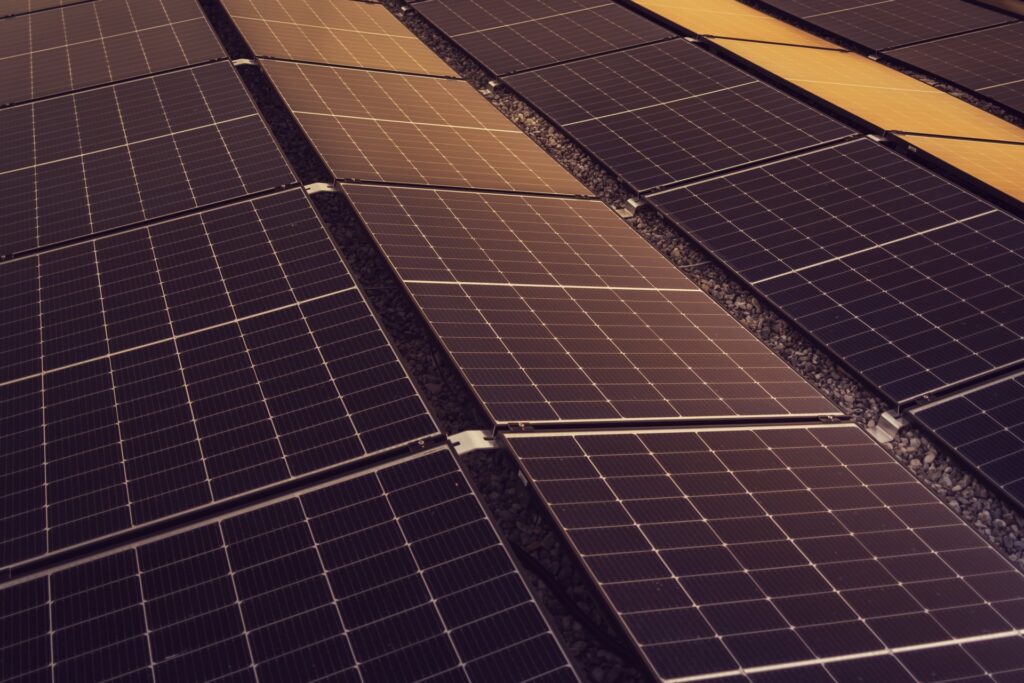What Does a Photovoltaic System Consist of? Modules, Mounting Systems – and What else?
A photovoltaic system is primarily associated with modules. However, these alone are not sufficient to generate electricity from solar energy. A suitable photovoltaic mounting system and many other components are also required. What exactly? You’ll find out in the article below.
Photovoltaic Modules
Photovoltaic modules form the foundation of a photovoltaic system. The most important reactions take place in these, allowing solar energy to be utilized. Each module is equipped with PV cells. These can capture sunlight, particularly its kinetic energy. The cells then convert it into electrical current. Until recently, polycrystalline modules were commonly used, i.e., those where multiple silicon crystals form a single cell. In contrast, more modern monocrystalline modules use cells consisting of single crystals. Glass-glass modules are also frequently used. These are so-called bifacial modules, which are covered with glass on both sides and have cells that generate electricity on both sides.
Also noteworthy are the Black Modules, which are entirely black. It should be mentioned that they function the same as modules in other colors, differing only in appearance. Installing photovoltaic modules of this type is an option for those who value an interesting aesthetic for the system. Those who prefer innovations should also look into BIPV modules. These are building-integrated photovoltaic systems. In this case, the modules are an integral part of the building and replace the roof covering or part of the facade.
Installation of Photovoltaic Systems – Selecting the Right Modules
It must be remembered that there are a variety of modules, and choosing the right one depends on many factors, such as:
- the required power output of the system,
- the size of the system,
- the purpose of establishing a system,
- the available budget.
To achieve the highest possible system performance, the most effective modules are used, likely glass-glass modules. The dimensions of the system, in turn, influence the size of individual modules, among other things. For example, if only a limited area is available, a larger substructure for photovoltaic modules is better than several smaller ones. This also allows for larger modules to be installed. If the goal is to build a solar park, the focus will also be on maximum efficiency. The preferred variant is the east-west photovoltaic system, i.e., a photovoltaic mounting system that is oriented in both directions simultaneously. Then, the most effective modules are installed to generate the maximum amount of electricity.
Stable and High-Quality Photovoltaic Mounting System
Regarding installation, photovoltaics is not just about modules. In addition to various components that we describe later in the text, a photovoltaic mounting system is required to ensure a stable and secure position for the modules. In our range, you will find numerous photovoltaic mounting systems that enable optimal installation of the modules.
Metal mounting systems are preferred. The most commonly used material is steel, which guarantees a long mechanical lifespan. The magnesium-based coating ensures corrosion resistance. Solid fixings such as rammed posts or concrete blocks guarantee a firm position and prevent the modules from shifting for years. For roof mounting, the substructure is significantly less complex and smaller than for ground-mounted installations. These are typically anchors with module brackets.
Inverters – Converting Direct Current to Alternating Current
In photovoltaic modules, reactions take place that generate electricity in the form of direct current. However, the vast majority of devices used in households and businesses require alternating current. An inverter, also called a power converter, is responsible for this transformation. This device is, so to speak, the heart of the system.
Cables for Photovoltaic Systems
The cells generate electricity from kinetic energy. However, for it to be used, it must reach the inverter and then the sockets or specific target devices. Appropriate cables are required for this. They serve to connect the modules to each other as well as to store and subsequently transmit the energy.
Typically, cables for photovoltaic systems are copper cables. However, aluminum cables are also available. Both come in many varieties and sizes. It is important to choose cables with a cross-section suitable for the installation that are secured against weather influences. If possible, the cables should be laid concealed to protect them from damage. Some cables can be hidden under the mounting system, others in the ground, and still others inside the house or other building being supplied with solar energy.
Energy Storage or Meters
In summer, on the sunniest days, the system generates an energy surplus. In contrast, production at night and in winter is not efficient enough. The ideal solution would therefore be to use the surplus. Is it possible? Of course! One option is to feed excess energy into the grid and draw it back when needed. In this case, the installation of a photovoltaic system also requires the installation of a meter to record how much energy we feed into the grid and later draw from it again.
If you want to live off-grid, which has proven to be quite profitable after recent legislative changes, invest in your own energy storage. This is an additional device that can be connected to a photovoltaic system. It is used to store excess energy and then simply use it as needed.

